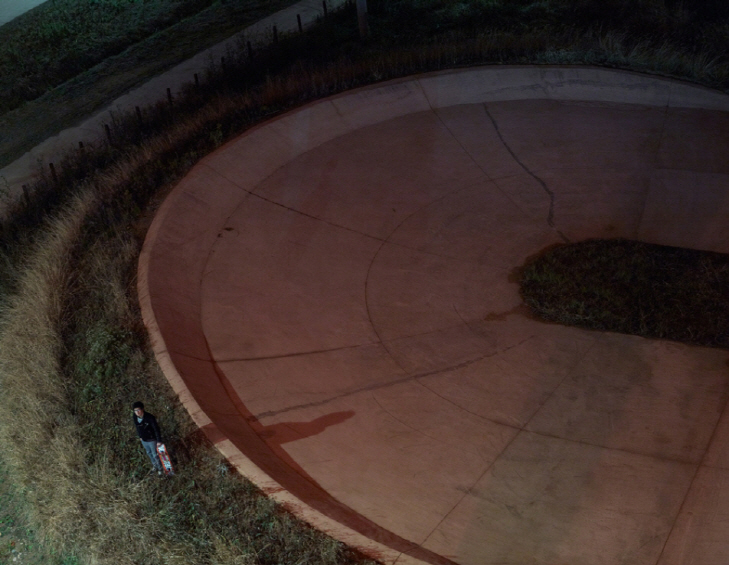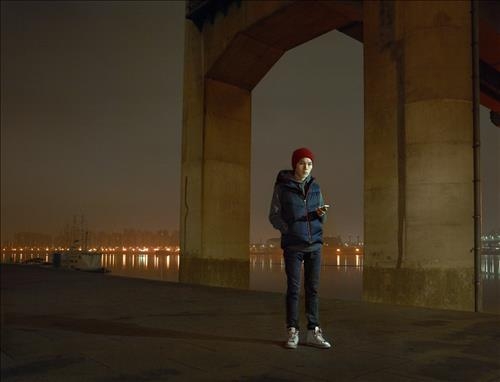Searching for the unfamiliar in the most familiar places.
We tend to take things for granted, even when they are solely personal. What makes perfect sense to one person might be completely unacceptable to another, even between people as close as newlyweds deeply in love or work colleagues that see each other at the office every day, because we have different standards for what makes sense to us. And before any fingers are pointed, it must be said that it takes two to create this kind of conflict. Chances are that if you feel that someone does or says something for reasons unfathomable to you, your behavior is just as alien to them.
What is it that we consider to be the norm, and what is it that we consider to be deviant? While there is no one answer to this question, it is clear that a key factor in the equation is the place where we were born and raised, where each of us accumulated different life experiences particular to that area. TaedongKim’s work tells the story of the place where he was born and never left. The artist was born in a suburb northwest of Seoul and lives there to this day. This is his hometown in every sense of the word, the standard by which he measures what is normal to him. As the artist’s home so familiar to him was never part of central Seoul, it is unfamiliar territory to someone who has never lived there. Some of the residents on their daily commute to the city may harbor vague dreams of leaving it all behind one day. Others may convince themselves that it is better to stay in their own familiar neighborhood, to try to think of it as a special place. The artist’s familiarity with his hometown encompasses both of these conflicting desires, to escape and to assimilate.
Inside his head is a perfect map of the area, from the longest boulevards to the most obscure side streets; inside his heart is an equally detailed map, attuned to the psyche of his colorful neighbors. Just as he remembers exactly where there used to be a church in the lot that is now a massive apartment complex, he could tell you where a certain teen with bleached hair spends his time and what he wants to be or furnish the complete life story and unfulfilled dreams of that woman in a black dress who now operates a pool hall.
To be familiar and close to a subject is to possess an understanding of its inner and outer workings. Such is the power of familiarity in Kim’s work that a simple gaze pierces through to the essence of the subject. The point of view that he applies to his photography is a skill that sees through objects and people, inside and out. It is an intimate knowledge gained from the many years he has spent in his hometown and the countless experiences and memories that made him the person he is.
The subject of his gaze is the place that formed the artist himself, the lives of those living in an area not so different from that of his own. While the viewer can hardly hope to experience the full extent of familiarity that the artist feels toward his surroundings, it is not hard to find oneself moved by the people and places featured in his work that awaken long-forgotten memories and desires.
We are the major characters of our lives and the supporting cast to someone else’s. The area and inhabitants in TaedongKim’s work are irrevocably, precariously positioned on the fringe. However, by tracing their past, and the changes and transformations that led to their present, the artist presents the people living in this area as major characters. His point of view invites us to gaze upon a sharp spike of a building, built scarcely ten years ago but resembling a shabbier Tower of Babel rather than anything modern or impressive. A picture of a stylishly dressed and coiffed Kim Tae-dong gazing into space shows a person who will wander somewhere between the peripheries and the center today, but can still count on more days to live than those that have passed. This point of view reveals the artist’s sometimes affectionate, sometimes self-deprecating attitude towards his peripheral city and the peripheral characters that live there.
If TaedongKim had chosen not to step outside of familiarity and the power that it offers, his work would amount to nothing more than sketches of his hometown, a journal. However, he chose to deploy a second point of view, that of attempting to look at familiar objects as if seen for the first time. The artist’s gaze follows that of a stranger, deliberately lingering on buildings and people he has known forever. Time and space appear to be strangely warped in street scenes taken from afar, the itinerant desires of its people suddenly becoming more palpable. Thus, by attempting to go slowly and examining his subjects in greater detail, no matter how familiar they were to him before, the artist intends to transcend the error of perception that might arise from familiarity.
Taking a fluid, not rigid, point of view is the path towards maturity of perception. Through this work, the artist reveals the complexity of our lives as it exists in both the peripheral and central.
Tossed together in a certain environment, people either rebel or accept their fate. What captivates TaedongKim, however, is not the force of will to choose one of the two paths but the precariousness of human nature to stay in one place, yet never ceasing to explore. This irrepressible desire is what transcends the center and the peripheral, and what has the power to make our tomorrow different from today.



















